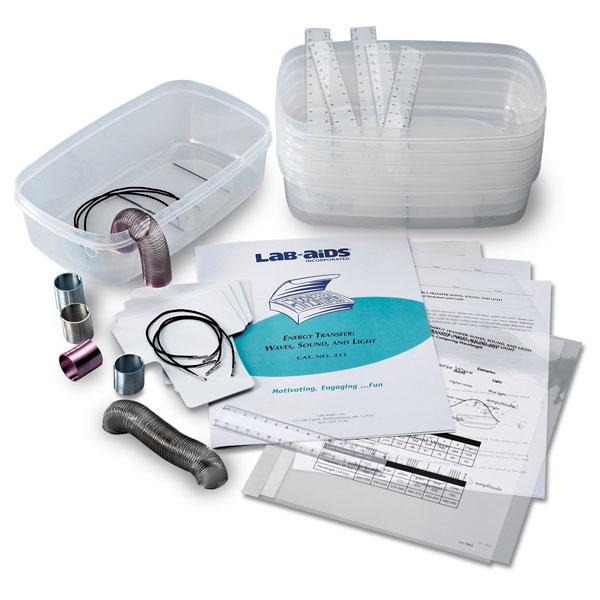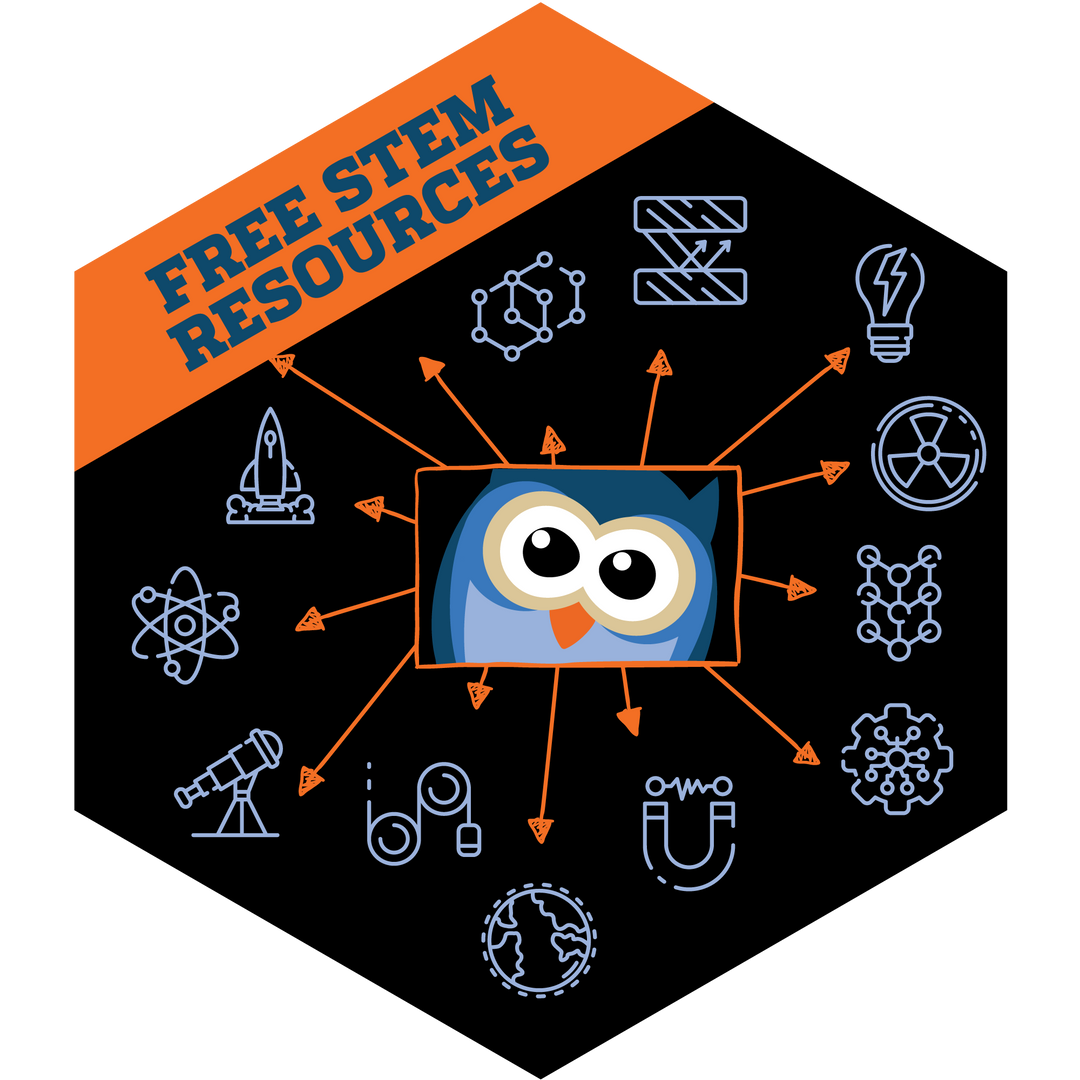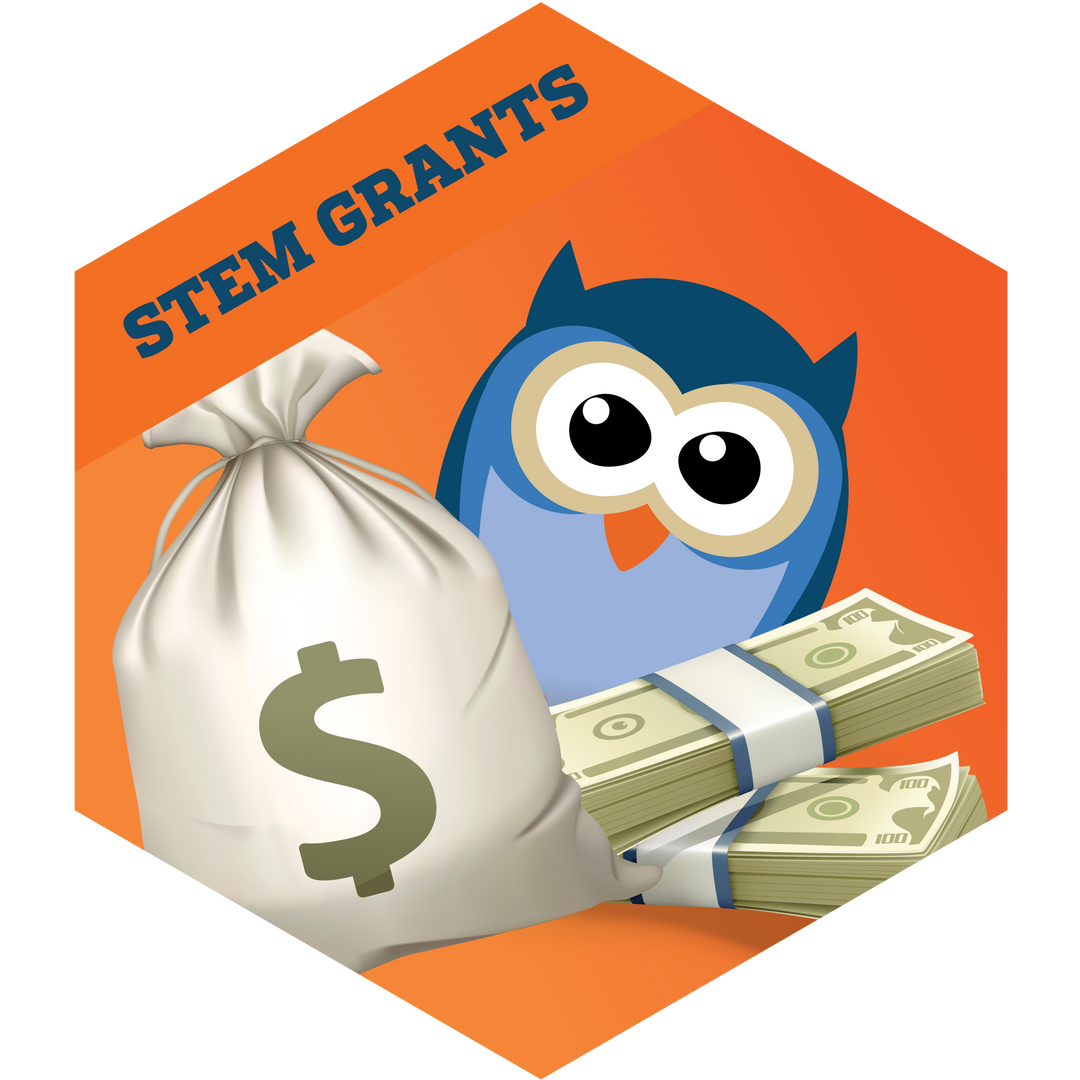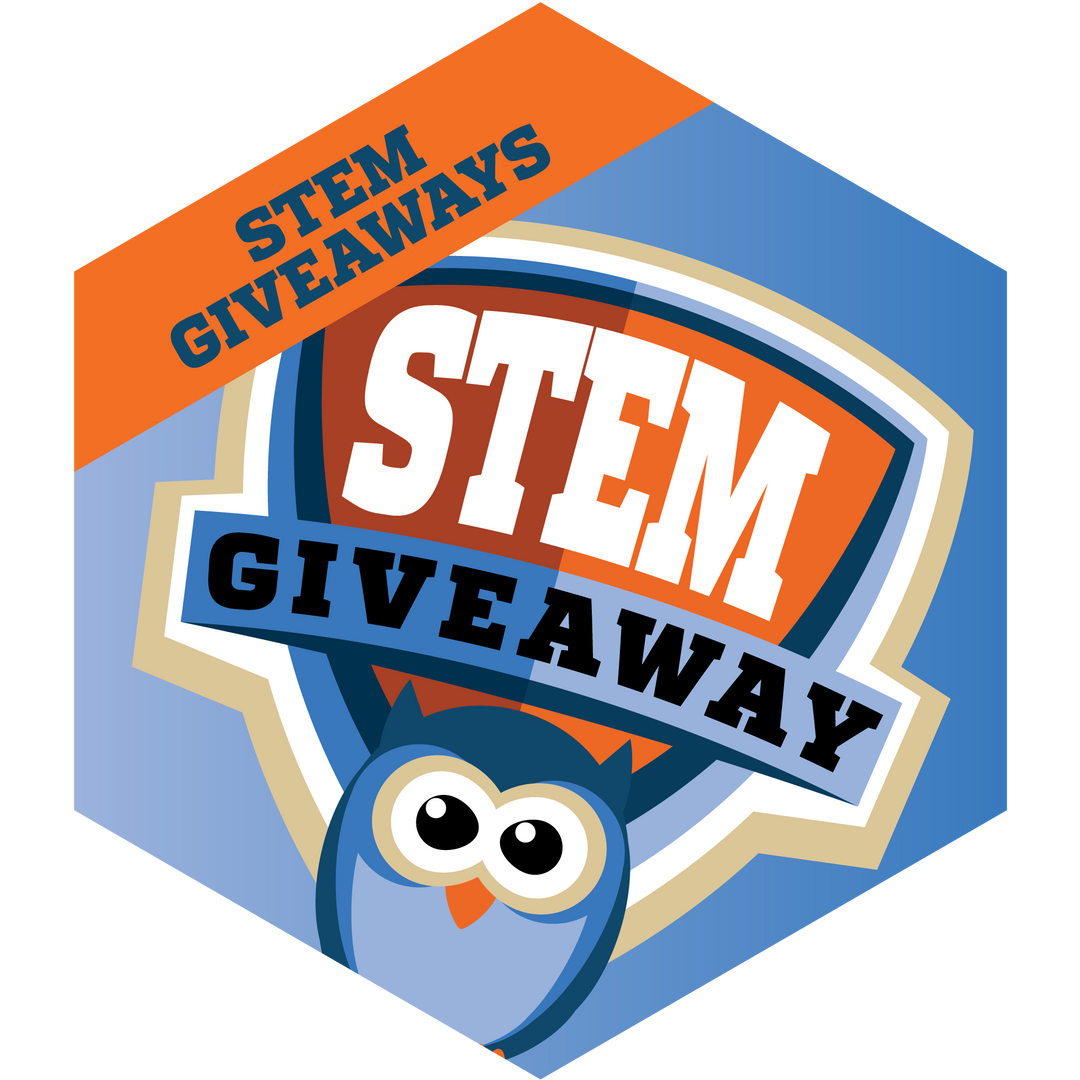Lab-Aids: Energy Transfer - Waves, Sound and Light Kit
In this series of activities students produce both longitudinal and transverse mechanical waves and compare their similarities and differences. As an introduction, students use water and springs to observe wavelength and frequency and discover the relationship between them. Their exploration of waves continues through investigating vibrations and the production of sound waves. Using an elasticized string allows students to create and observe different pitch notes and relate the sounds produced to the frequency of the vibrations. They then read about the wave nature of different energy forms, including light and sound, and are introduced to the fundamental features common to all waves. The reading compares and contrasts the similarities and differences among different energy waves and explains how our eyes and ears interpret various wave forms.
Scientific Concepts:
- Many types of energy, such as sound and light, travel in the form of a wave
- All waves have certain characteristics such as wavelength, frequency and amplitude
Content List:
- 1 Teacher's Guide
- 28 Student Worksheets and Guides
- 6 Mini Wave Tanks, LAB-AIDS‚®
- 6 Spring
- 6 Elastic string with barbed ends
- 6 Plastic paddles
- 6 Rulers, 15-cm
- 1 Transparency 1: Wave Characteristics
- 1 Transparency 2: Comparing Wavelength
Classroom Planning:
- To complete the three activities in this kit requires three to four ~50-minute class periods.
- Number of students: 24













